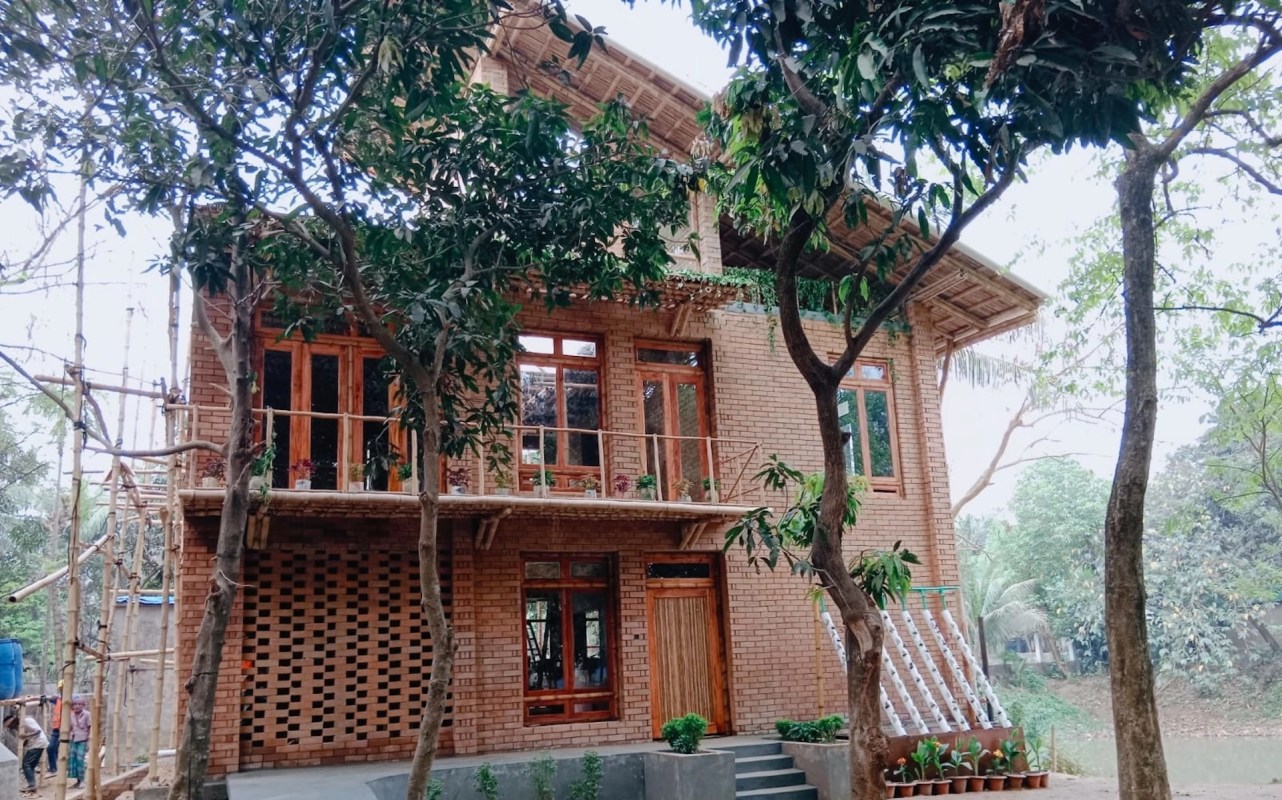A better brick designed in Scotland is being used to build new homes in Bangladesh.
The brick mix is a concept developed by experts at the University of Dundee that showcases amazing features typically not part of housing designs. The properties built with the materials can reportedly float, produce power, and grow food, all according to a news release from the university.
"The communities that we have been working with are ecstatic about what they are seeing," Roufa Khanum, an expert from Bangladesh's Brac University, said in the report. He is working with Dundee's team on the project.
The initial group of demonstration homes is complete. They are intended to provide better abodes for riverside dwellers living in areas prone to floods and other extreme weather events, which are more likely because of our planet's overheating. The weather is particularly troubling in Bangladesh, where the Dundee team said 45 million people live in areas at risk of cyclones.
The homes look standard, including doors, windows, and other essentials. The difference begins with the soil and sand bricks, which are bolstered by jute fibers.
"When soil is compressed with sand it turns into a semi-stone. We used clay soils, which have natural binding properties," Dundee's Nandan Mukherjee said.
Other additives promote a chemical reaction that creates heat, eliminating the need to "toast" the bricks. The process also pulls air pollution out of the atmosphere. What's more, the bricks have strength comparable to commonly used ones at one-third of the cost, all per the experts.
"Nature has been a great teacher and it has ultimately taken two years to develop this new brick," Mukherjee said.
It's a project that started in 2017 with Dundee's development of $12,000 disaster-resilient homes that leverage permaculture to grow food and renewable energy for power and have the ability to float. The innovation picked up accolades and funding, culminating in a demonstration project in Dhaka that features the ingenious bricks.
Harnessing nature in construction techniques can help us to maximize our energy usage, reducing air pollution and costs. By incorporating permaculture to better grow food, community members can improve their diets by eating homegrown, fiber-rich meals. Garden food is shown to have plenty of health benefits, including an ability to reduce cancer risks, according to a University of Colorado report.
These concepts are becoming more common among builders. In Arizona, for example, Vali Homes' designers borrow from nature to create houses that thrive in the desert. The structures include wood fiber and sheep wool walls as part of the unique construction innovations.
The Dundee bricks are able to be replicated from "Africa to America," the experts said. Now, the innovation has the potential to change the very foundation of the construction sector.
"In the short-term, we need to illustrate the potential of this concept, demonstrate its success and then allow others to utilize it. … This is a global concept and one we want to gift to the world," Dundee professor John Rowan said.
Join our free newsletter for weekly updates on the coolest innovations improving our lives and saving our planet.









